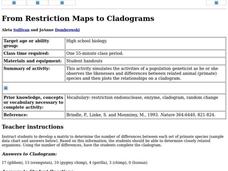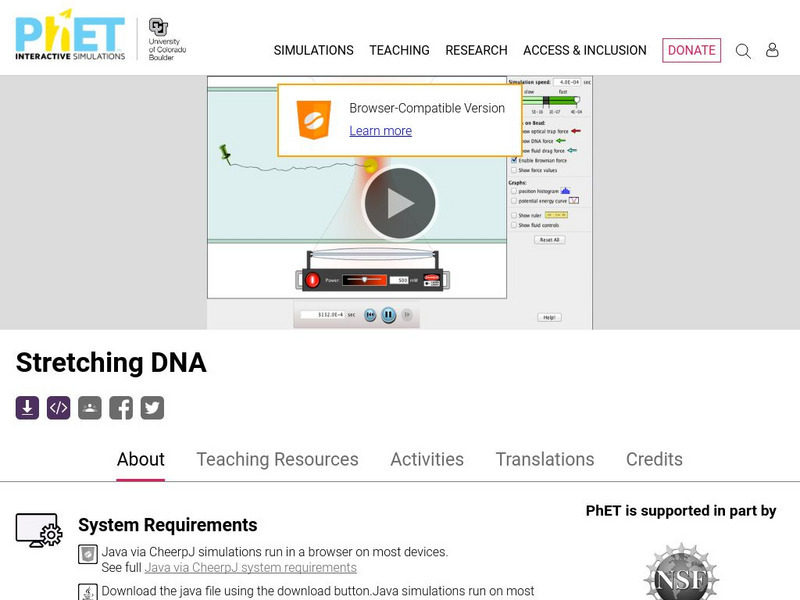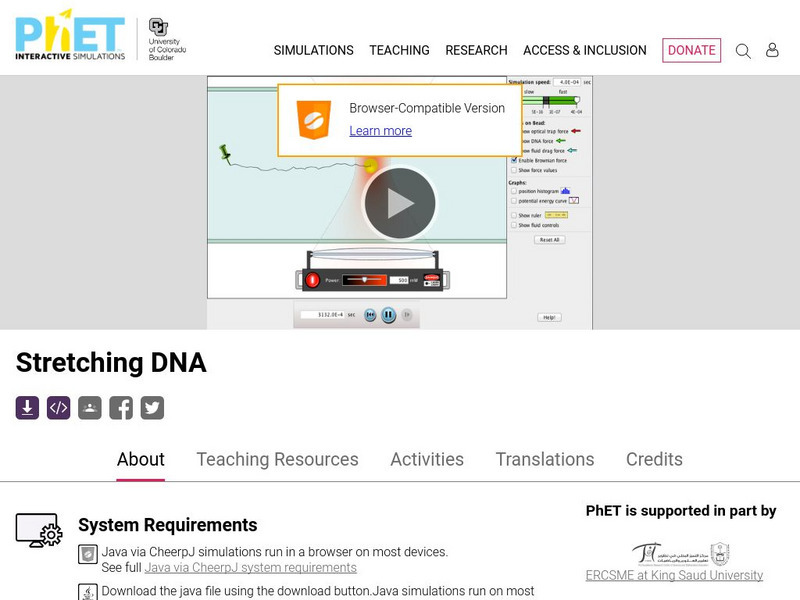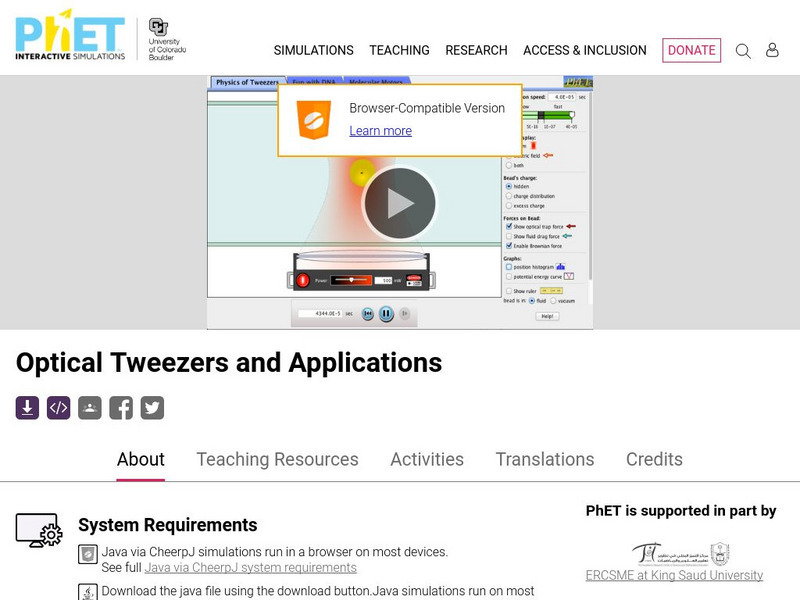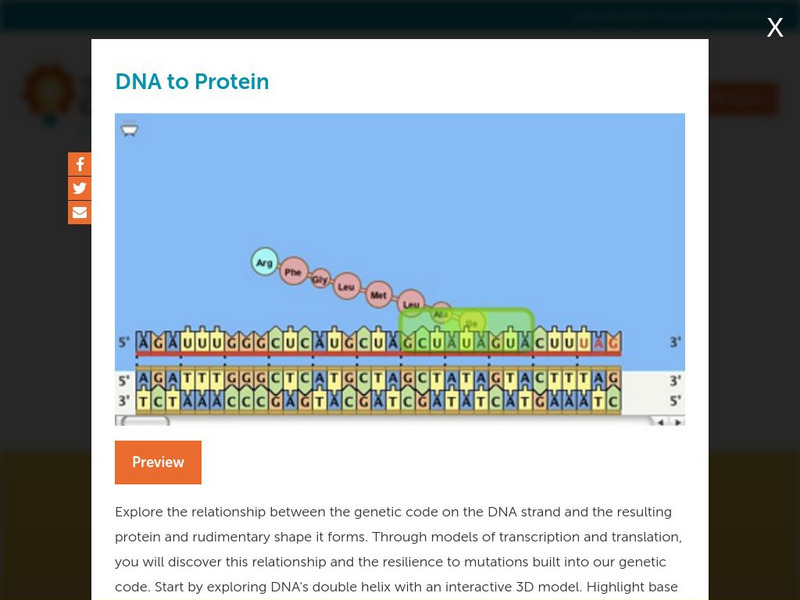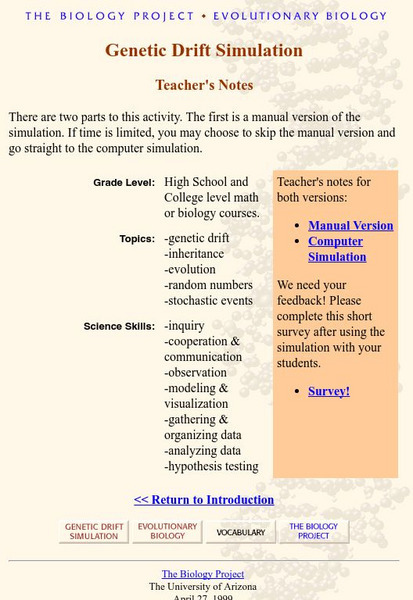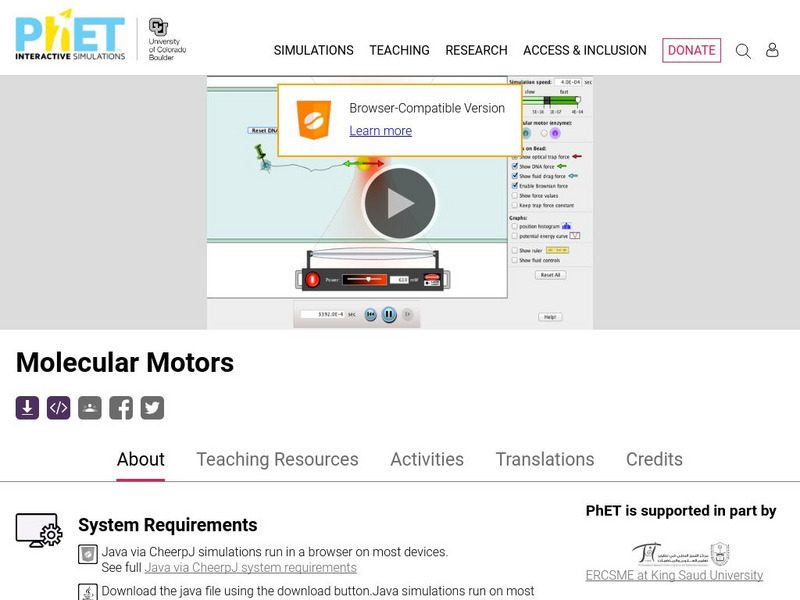Curated OER
Lost Baby
Learners simulate the steps involved in creating a DNA fingerprint by the RFLP technique. They analyze RFLP patterns to determine the parentage of a missing baby.
Curated OER
The Genetics of Antibody Diversity
Students distinguish between the light and heavy chain sections. In this biology lesson, students simulate the DNA splicing process. They calculate antibody diversity using the information given.
Curated OER
Ethical Decision Making in Biology
Young scholars explore a model that illustrates the spread of HIV through an adolescent population. Acting in the role of epidemiologists, students explore the dilemmas of HIV infection presented by a simulation. Young scholars produce a...
Virginia Department of Education
Prokaryotes
Lead your biology class on a cell-sized adventure! Emerging scientists construct models of prokaryotes, then design an experiment to properly grow a bacterial culture. They conclude the activity by viewing the culture under a microscope....
Curated OER
Genetically Modified Organisms
High Schoolers complete a variety of activities as they examine the ethics of (and take a position concerning) genetically modified organisms in the field of agriculture. They complete a PowerPoint demonstration to go along with the unit.
Curated OER
Biotechnology Laboratory Research
Students participate in an extended laboratory research to experience how scientific information is obtained, upon which we build scientific knowledge and understanding.
Serendip
The Molecular Biology of Mutations and Muscular Dystrophy
Different types of mutations cause unique types and degrees of muscular dystrophy. Scholars learn about the types of mutations and the impact on the body. They compare the location of the mutations and draw conclusions about how it is...
National Nanotechnology Infrastructure Network
Silver and Bandages: Assessment of Inhibition of Bacteria by Silver Colloid-Impregnated Bandages
Silver: more than jewelry, it's also a natural antimicrobial agent. An inquiry-based lesson asks collaborative groups to design and implement an experiment to test this property. Using samples of silver nanoparticles and a strain of...
Kenan Fellows
Unit 4: The Brain
Drugs interact with the brain to alter moods, emotions, and behaviors by changing the brain's chemistry, perceptions, and interactions. The final lesson in the Pharmacology unit shows scholars experiments, has them complete four labs,...
Curated OER
Molecular Approaches to Evolution
Students examine the molecular studies of organisms that have led to a new era in their understanding of speciation and evolutionary relationships. Students study the allelic frequency of genes controlling specific molecules and assess...
Curated OER
Geneticist for a Day
Young scholars discuss and compose a document discussing the transmission of the Huntington's gene- dominant or recessive, sex linked, etc. Additionally, they ought to consider Dr. Wexler's own odds for contracting the disease.
Curated OER
Born of Blood: Inheritance of Blood Types
Students examine inheritance of blood types. In the chromosome activity, students create a model of chromosome and predict the blood type of offspring.
Curated OER
From Restriction Maps to Cladograms
Students develop a matrix to determine the number of differences between each set of primate species. They determine closely related organisms then complete the cladogram and answer a set of questions.
National Health Museum
Access Excellence: Wolf Pack in a Bottle: Dna Simulation
This lesson plan can be used to illustrate the principle of electrophoresis without the equipment. Paper chromatography can be used to separate dye just like electrophoresis will separate DNA. The lab also covers DNA analysis for an...
University of Colorado
University of Colorado: Ph Et Interactive Simulations: Stretching Dna
Explore stretching just a single strand of DNA using optical tweezers or fluid flow. Experiment with the forces involved and measure the relationship between the stretched DNA length and the force required to keep it stretched. Is DNA...
University of Colorado
University of Colorado: Ph Et Interactive Simulations: Stretching Dna
Explore stretching just a single strand of DNA using optical tweezers or fluid flow. Experiment with the forces involved and measure the relationship between the stretched DNA length and the force required to keep it stretched.
University of Colorado
University of Colorado: Ph Et Interactive Simulations: Optical Tweezers and Applications
Did you ever imagine that you can use light to move a microscopic plastic bead? Explore the forces on the bead or slow time to see the interaction with the laser's electric field. Use the optical tweezers to manipulate a single strand of...
Concord Consortium
Concord Consortium: Stem Resources: Dna to Protein
Investigate how the genetic code on a DNA strands controls what protein is produced with this collection of animations and 3D models. Explore an interactive 3D model of the double helix, watch an animation of transcription, and see the...
University of Arizona
University of Arizona: Genetic Drift Simulation
This site from the University of Arizona runs a two-step simulation of Genetic Drift. There are teacher's notes included. A great site to aid in understanding Genetic Drift.
Carnegie Mellon University
Chem Collective: Dna Binding Dyes Scenario
This activity explores the equilibrium of dyes that self-assemble into DNA templates. Students use knowledge of equilibrium and quantitative spectroscopy to explore different dyes that bind selectively to DNA molecules. In this activity,...
Concord Consortium
Concord Consortium: Molecular Workbench: Modeling Dna Hybridization
View this simulation of DNA Hybridization.
University of Colorado
University of Colorado: Ph Et Interactive Simulations: Gene Machine the Lac Operon
Build a gene network! The lac operon is a set of genes which are responsible for the metabolism of lactose in some bacterial cells. Explore the effects of mutations within the lac operon by adding or removing genes from the DNA.
University of Colorado
University of Colorado: Ph Et Interactive Simulations: Molecular Motors
Discover what controls how fast tiny molecular motors in our body pull through a single strand of DNA. How hard can the motor pull in a tug of war with the optical tweezers? Discover what helps it pull harder. Do all molecular motors...
University of Colorado
University of Colorado: Ph Et Interactive Simulations: Gene Machine: The Lac Operon
Build a gene network. The lac operon is a set of genes which are responsible for the metabolism of lactose in some bacterial cells. Explore the effects of mutations within the lac operon by adding or removing genes from the DNA.












